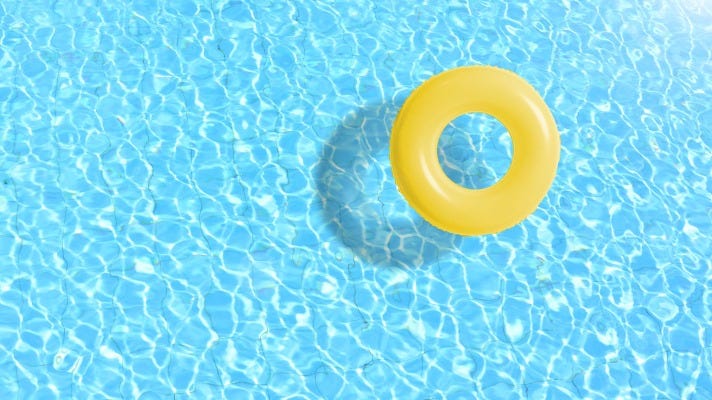As the weather gets warmer, swimming pool owners are beginning to prepare their pools for the summer months. For many, this includes draining pool water to clear debris, make repairs, and conduct other maintenance activities. However, improper drainage of swimming pool water can harm local streams and aquatic life. There are a number of steps that pool owners can take to properly drain their pool and help protect their local waterways.
As a first step, residents should always contact their local government to obtain any approvals that may be necessary to drain pool water. For chlorine pools, any chlorine or bromine should be removed by allowing the water to sit for at least 10 days while the chemicals dissipate or with the use of a removal agent. Water should then be tested to ensure that chemical levels are less than .1 mg/L and the pH is between 6 - 8. Pool owners should also clean out as much debris as possible, including leaves, algae, and sediment, prior to drainage.
Notably, drainage guidance differs between chlorine and saltwater pools:
Chlorine Pools
Once chlorine is removed, pool water can be drained into a local sanitary sewer system or slowly released onto a grassy or vegetated area over the course of several days. Water should be drained in an area that avoids any direct discharge into nearby storm drains and waterways. Pool owners should monitor discharge and redirect the flow of water if any erosion or flooding begins to occur, or if water is flowing onto adjacent properties.
Saltwater Pools
Water from saltwater pools should never be discharged into the yard or nearby storm drain. Instead, pool owners should drain the water into their local sanitary sewer system or hire a licensed water service to transport the water to a publicly owned treatment facility for disposal. A local water or sewer authority may have additional recommendations for saltwater pool drainage and should be contacted to determine the most feasible disposal option.
For additional best practices for pool drainage and to learn about other ways that you can reduce local pollution, visit the Northern Virginia Clean Water Partners website: www.onlyrain.org.
About the Northern Virginia Regional Commission
NVRC is a consortium of thirteen local governments representing more than 2.5 million residents. The region has a GDP of $251 Billion which is 41.4% of the GDP of the Commonwealth of Virginia. Northern Virginia’s GDP is larger than 26 states and if a country would be the 46th largest economy in the world.
About the Northern Virginia Clean Water Partners
The Northern Virginia Clean Water Partners are a group composed of local governments, drinking water and sanitation authorities, schools, and businesses that share the common goals to keep Northern Virginia residents healthy and safe by reducing the amount of pollution from stormwater runoff that reaches local creeks and rivers, and empower individuals to take action to reduce pollution.




